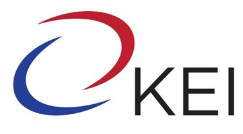The Peninsula
[Policy Brief] Knocking at the Door: South Korea’s Potential Participation in AUKUS Pillar Two

This policy brief offers a concise summary and set of recommendations from a longer paper, featured in the Fall/Winter issue of KEI’s flagship journal Korea Policy. The full paper can be found here and the entire Korea Policy issue here.
Executive Summary
South Korea’s interests in collaborating in AUKUS Pillar Two advanced technology development projects can advance both South Korean and US security interests, bolster the joint alliance, enhance the developing lattice of East Asian multilateral associations, and contribute to regional stability. Incorporating South Korea into AUKUS partnerships is likely to be most successful if done carefully and selectively, with an eye to the strongest opportunities for progress and benefit to all parties.
Background
In September 2021, Australia, the United Kingdom, and the United States announced the formation of the AUKUS security partnership, building on existing bilateral ties. The primary AUKUS initiative was US and UK support for Australia’s acquisition of nuclear-powered submarines. Less widely recognized, the partners concurrently committed to initiate trilateral collaborative projects for developing advanced capabilities with military applications. While the Pillar One nuclear submarine development project is exclusive, the partners from the beginning conceived of Pillar Two collaboration projects as open to incorporation of other allies and close partners.
The new AUKUS partnership elicited a range of reactions in South Korea. Given some pre-existing interest in acquiring nuclear-powered submarines, the Pillar One project was both welcomed as a contribution to regional security relationship-building and lamented for South Korea’s own exclusion. Over time, South Korean interests in possibly joining AUKUS Pillar Two activities has moved more to the forefront of attention, with advocates seeing opportunities to deepen South Korea’s role as a trusted and responsible regional partner and to advance practical security capabilities, and skeptics cautioning of potential reactions from China.
In September 2024, the AUKUS partners announced that consultations were underway with South Korea (among a select few countries) to identify possibilities for inclusion in Pillar Two collaboration projects. Initial consultations are likely to focus on identifying the areas most likely to leverage the strongest innate capabilities of added partners, pose the fewest obstacles to technical information exchange, and offer the clearest potential contribution to individual and collective security objectives.
AUKUS Pillar Two currently includes eight initiatives to develop and field advanced capabilities. Six focus on specific technology areas: undersea capabilities, quantum technologies, artificial intelligence and autonomy, advanced cyber, hypersonic and counter-hypersonic capabilities, and electronic warfare. The other two more functional areas are innovation and information sharing. Drawing on Australian Strategic Policy Institute (ASPI) data and other sources, this brief evaluates South Korea’s existing capacity and developmental potential in these areas—that is, what South Korea has both to bring and to gain from collaborating in Pillar Two projects. With these criteria, the data across these areas indicate:
– Undersea capabilities development projects may offer mutual benefits that would be strong and lasting for all parties.
– South Korea would likely benefit from inclusion in quantum technology projects, but its capacity for contribution appears more limited.
– AUKUS partners would benefit from South Korea’s strong existing capacities on artificial intelligence and autonomous systems development, and South Korea has strong practical motivations for joining such projects.
– South Korea would likely benefit from greater cooperation to improve its cyber defenses, but that need also poses obstacles to advanced collaboration.
– Despite its existing R&D efforts, South Korea’s potential contribution on hypersonic technologies may be relatively less beneficial to other partners.
– Although information on current AUKUS electronic warfare projects is limited, there may be unique mutual opportunities from South Korean collaboration.
– While innovation capacities are not cumulative, South Korea’s high global ranking in this area suggests positive synergies in AUKUS collaboration.
– Building on South Korea’s existing information-sharing links with key partners, measured partnership-building in this area may be a key enabler of greater incorporation of South Korean efforts more generally.
Policy Recommendations & Implementation
– South Korean participation in Pillar Two advanced technology development projects should not be expected to emerge quickly. All parties seem poised to build new partnerships slowly and thoughtfully. Successful collaboration will require balancing security and technological sharing considerations.
– Successful inclusion of South Korea in AUKUS Pillar Two projects also must surmount political hurdles. In Seoul, this includes managing reactions from China and developing a trans-partisan commitment to long-term collaboration. For all countries, deepening the existing foundations of trust is a prerequisite.
– AUKUS Pillar Two collaboration may also catalyze more basic debates in South Korea over defining core security interests and how best to pursue them.
Conclusion
Potential inclusion of South Korea in AUKUS Pillar Two projects in many ways lies at the crossroads of South Korea’s own evolving security conceptions and deepening US-China security tensions. Hence, the presence or absence of South Korean participation may saliently influence the solidarity of the US-ROK security alliance and the shape of regional security dynamics for years to come.
Dr. Wade Huntley is a Senior Lecturer at the Naval Postgraduate School. The views expressed here are the author’s alone and do not reflect positions of the Naval Postgraduate School or the US government. Yosep Kim is a Major in the Republic of Korea (ROK) Air Force. The views expressed here are the author’s alone.
Photo from US Pacific Fleet’s official Flickr account.
KEI is registered under the FARA as an agent of the Korea Institute for International Economic Policy, a public corporation established by the government of the Republic of Korea. Additional information is available at the Department of Justice, Washington, D.C.
